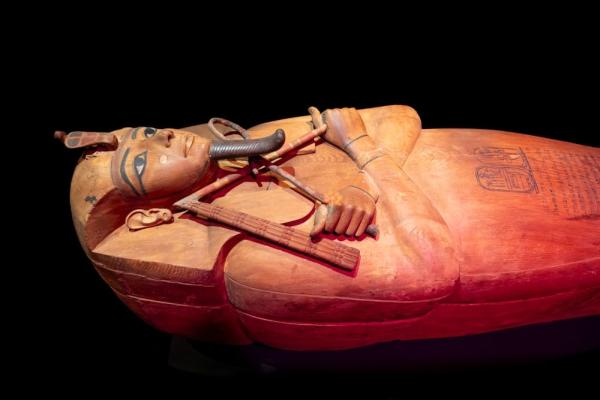
Thanatoesthetics and thanatopractice: differences, techniques, and profession
Thanatoesthetics and thanatopractice are two concepts that can sometimes cause confusion. Although both refer to the preparation of a deceased person, the techniques used in each case are different. Today, Áltima clarifies the differences between these two professions.
Understanding thanatoesthetics and thanatopractice
There is some confusion between the terms thanatoesthetics and thanatopractice. While they have many similarities, they also present important differences.
What is thanatoesthetics and what is its origin?
Let’s start by defining thanatoesthetics. This discipline encompasses the set of techniques for the restoration and aesthetic care of a deceased person.
It is the next step after preparing the body and focuses on making the body appear natural and dignified. This allows family members to have a more comforting farewell, as they can see their loved one as they were.
To achieve this, aesthetic techniques are applied using makeup and other materials to improve the appearance of the deceased.
What is thanatopractice and what is its origin?
Now, let’s look at thanatopractice. It is a specialty that uses different techniques for the hygiene, conservation, restoration, aesthetic care, and embalming of a deceased person. It encompasses practices aimed at improving both the visible and non-visible state of the body.
Thanatopractice has its origins in ancient Egypt and aims to care for and preserve the body of the deceased so that family members can say goodbye even after several days.
The techniques used focus on cleaning and conserving the body.
Key differences between these two practices
The main difference between thanatoesthetics and thanatopractice is that the former is derived from the latter. Thanatopractice involves a more general preparation, while thanatoesthetics is a more specific task.
Procedures and techniques of thanatoesthetics and thanatopractice
Despite the similarities between thanatoesthetics and thanatopractice, each discipline applies its own techniques and procedures.
Thanatopractice usually addresses not only the external appearance of the body but also the internal aspects. Thus, the thanatopractor is responsible for:
- Disinfecting and cleaning the body to remove bacteria that accelerate decomposition. This sanitation is performed with chemicals to ensure that the viewing does not pose a risk to family members.
- Removing tissues and other elements. Sometimes, the thanatopractor is responsible for removing prosthetics or pacemakers.
- Conserving and embalming the body.
- Restoration and reconstruction, which are necessary when the death has occurred due to an accident or illness with visible aftermath.
- Applying makeup and dressing the body.
In terms of thanatoesthetics, the functions of these professionals are:
- Receiving and handling the deceased.
- Positioning the deceased and raising their head.
- Inspecting and working on the deceased.
- Dressing, grooming, and applying makeup to the deceased.
- Placing the deceased in the casket.
How long do these processes take?
The application of various procedures and techniques in thanatoesthetics and thanatopractice can take several hours, aiming to ensure that the deceased has the best possible appearance.
Depending on the case and the circumstances of the deceased, this time may vary. However, professionals in these fields have mastered the techniques they perform, allowing them to return the body to the family as quickly as possible so they can offer their desired farewell.
Key aspects of the thanatoesthetics and thanatopractice professions
The number of professionals dedicated to thanatoesthetics and thanatopractice continues to grow due to the high demand for qualified personnel to perform these tasks.
What studies are required?
There are numerous courses in thanatoesthetics and thanatopractice that provide professionals with the necessary knowledge and teach the appropriate techniques.
It is important that this training is provided by a legally accredited school to acquire the skills and competencies needed to become a professional in thanatoesthetics and thanatopractice.
To enhance career opportunities, it is recommended to complete both courses, as this broadens job prospects for the future.
It is worth noting that thanatoesthetics and thanatopractice studies are not higher education degrees; that is, there are no university degrees, official master's programs, or vocational training in these areas. Generally, they are specific courses offered by various schools.
What is the average salary of a thanatoesthetics and thanatopractice specialist?
In addition to career prospects and the wide range of job opportunities available, one of the main attractions of studying thanatoesthetics and thanatopractice is the salary. Qualified professionals can earn around €2,000 per month.
This figure can be even higher depending on the professional's level of preparation. For this reason, many people find it very appealing to orient their professional career toward this field.
The vast majority of funeral companies offer these services to families when a loved one passes away, making it necessary to have qualified professionals who can ensure that the deceased appears as natural and dignified as possible.
At Áltima, we always strive to offer families the most comprehensive funeral services. You can explore all the available options to personalize the farewell to your loved one.


